IoT in Healthcare: Benefit, Challenge and Future Development
The Internet of Things (IoT) is a network of interconnected devices that can collect, exchange, and process data without human intervention. It has transformed various industries and sectors, such as manufacturing, agriculture, transportation, and education.
One of the most promising and impactful applications of IoT is in healthcare, where it can enhance the quality, efficiency, and accessibility of healthcare services and outcomes. However, it also faces several challenges and risks.
In this article, we will explore IoT's current and future developments in healthcare and discuss the benefits and challenges of this emerging technology.
Part 1: What Is the Internet of Things in Healthcare?
The Internet of Things in healthcare, or the Internet of Medical Things (IoMT), applies technology to the medical and health domain. It involves using smart devices, sensors, software, and communication networks to connect patients, healthcare providers, and medical equipment and collect, transmit, and analyze health-related data.
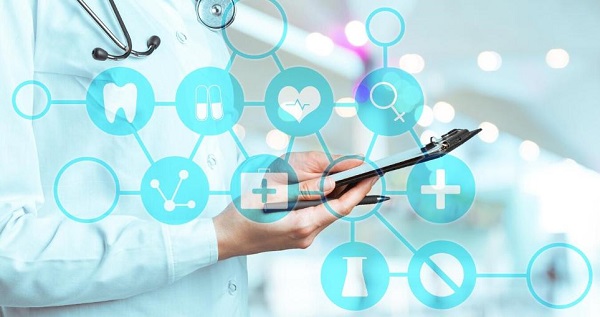
IoT in healthcare can help healthcare organizations deliver better, faster, and cheaper healthcare services and improve patient outcomes and experiences. It can also empower patients to take more control and responsibility for their health and wellness and access healthcare services anytime and anywhere.
Part 2: IoT Examples and Devices in Healthcare
There are many examples and devices of IoT in healthcare, which can be classified into different categories according to their functions and purposes. Some of the most common and popular ones are:
Intelligent Medical Devices
Intelligent medical devices can monitor, measure, and record patient's physiological parameters and vital signs, such as blood pressure, heart rate, glucose level, oxygen saturation, temperature, etc. They can alert patients and healthcare providers of any abnormal or critical conditions and provide feedback and guidance for treatment and prevention.
Wearable Devices
Wearable devices, such as smartwatches, fitness trackers, smart glasses, smart clothing, and smart jewelry, can be worn on the body. They can track and record various health and fitness metrics, such as steps, calories, sleep, stress, and activity levels. They can provide notifications, reminders, and suggestions for improving health and wellness.
Wireless Connected Devices
Wireless connected devices can be connected to different devices and networks via wireless technologies, such as Bluetooth, Wi-Fi, or cellular. They can transmit and receive data and commands remotely and can be controlled and accessed by smartphones, tablets, or computers.

Ingestible Sensors
Ingestible sensors can be swallowed or implanted in the body, measuring and recording various internal parameters and conditions, such as pH, temperature, pressure, and medication intake. They can also transmit the data to external devices and networks and be controlled and activated remotely.
Smart Thermometer
A smart thermometer is a device that can measure and record body temperature and sync with a smartphone app or a cloud-based platform, providing insights and trends for fever or infection and providing information and guidance for treatment and prevention.
Health-Monitoring Equipment
Health-monitoring equipment can monitor and record various health-related parameters and conditions, such as blood pressure, blood oxygen, electrocardiogram, glucose level, etc. They can also provide feedback and guidance for treatment and prevention.
Smart Hospital / Virtual Ward
A smart hospital or a virtual ward is a system that can connect and integrate various IoT devices and networks in a hospital or a home setting, and can provide remote and real-time monitoring, diagnosis, and treatment of patients, and can also optimize hospital operations and workflows, such as admission, discharge, transfer, scheduling, inventory, and security.
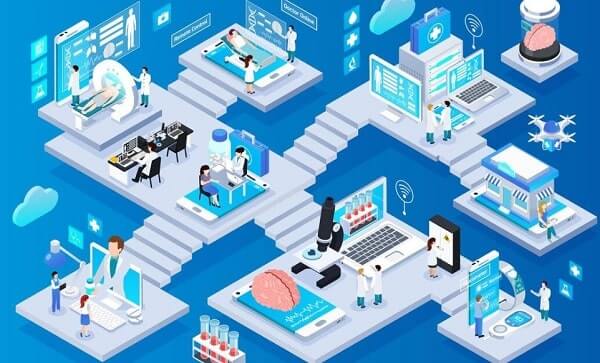
Remote Patient Monitoring
Remote patient monitoring (RPM) is a system that can monitor and record various health-related parameters and conditions of patients at home or outside the hospital, transmit and receive the data to and from healthcare providers and caregivers, and provide remote and real-time feedback and guidance for treatment and prevention. RPM can improve patient access and convenience, reduce hospital visits and costs, and enhance patient outcomes and experiences.
Robotic Surgery
Robotic surgery is a system that can use automated devices and instruments to perform surgical procedures, can be controlled and guided by surgeons remotely or locally, can provide enhanced precision, accuracy, and flexibility for surgery, and can reduce surgical complications and recovery time.
Drug Stewardship
Drug stewardship is a system that can use IoT devices and networks to track and manage the supply, distribution, and consumption of drugs, provide improved safety, quality, and efficiency for drug delivery and administration, and reduce drug waste, misuse, and abuse.
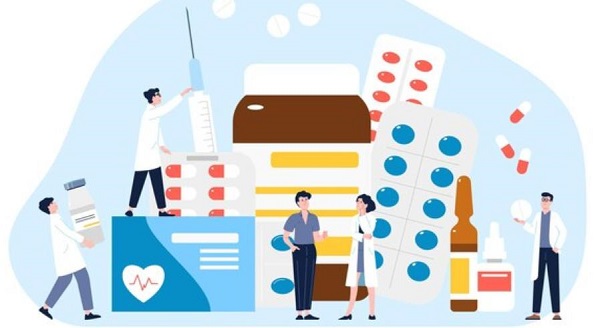
Clinical Workflow Optimization
Clinical workflow optimization is a system that can use IoT devices and networks to improve and streamline the processes and operations of healthcare organizations, such as admission, discharge, transfer, scheduling, inventory, and security. It can enhance efficiency, productivity, and quality for healthcare delivery and administration, reducing costs, errors, and delays.
Part 3: Benefits of the Internet of Things for Healthcare
The Internet of Things for healthcare can provide various benefits for both patients and healthcare organizations, such as:
For Patients
- Improved access and convenience: IoT in healthcare can enable patients to access healthcare services anytime and anywhere, receive remote and real-time monitoring, diagnosis, and treatment, and reduce hospital visits and travel costs.
- Enhanced engagement and empowerment: It can enable patients to take more control and responsibility for their health and wellness, receive personalized feedback and coaching for health and fitness goals, improve patient adherence and outcomes, and reduce health risks and complications.
- Increased safety and quality: IoT in healthcare can enable patients to receive more accurate, precise, and reliable healthcare services, reduce human errors, infections, and adverse events, and improve patient safety and quality.
For Healthcare Organizations
- Optimized efficiency and productivity: IoT in healthcare can enable healthcare organizations to improve and streamline their processes and operations, reduce costs, errors, and delays, and improve efficiency and productivity.
- Enhanced performance and quality: It can enable healthcare organizations to collect and analyze more data and insights and provide better clinical decision support and care coordination.
- Facilitated research and innovation: It can enable healthcare organizations to conduct and participate in more research and innovation and to discover and develop new solutions and technologies.
Part 4: Potential Risks and Challenges in IoT Healthcare
The Internet of Things for healthcare also faces several risks and challenges, such as:
High Upfront Investment Costs
One of the significant challenges of IoT in healthcare is the high upfront investment costs required for acquiring, installing, and maintaining various IoT devices and networks, as well as for training and educating the staff and the patients on how to use them.
These costs may be too high for some healthcare organizations and patients, especially in developing countries or rural areas, where the infrastructure and resources may be limited or lacking.

Data Security and Privacy Protection
Another significant challenge of IoT in healthcare is the data security and privacy protection of the large amounts of sensitive and personal health-related data collected, transmitted, and processed by IoT devices and networks.
These data may be exposed to hacking, theft, or misuse by unauthorized or malicious parties, which may compromise the security and the privacy of the patients and the healthcare organizations and may cause physical, emotional, or financial harm or legal or ethical issues.
Bonus: Remote Support Software for Secure Access to Patient Data
One of the possible solutions for enhancing data security and privacy protection in IoT healthcare is to use remote support software that meets the strict safety standards set by the Health Insurance Portability and Accountability Act (HIPAA), which is a US law that regulates the protection and the sharing of health information.
AirDroid Remote Support is an example of such remote support software that meets the healthcare industry's need for secure access to patient data. It is remote support software that allows healthcare professionals to remotely view patient data on hospital devices and support patients with powerful remote support features.
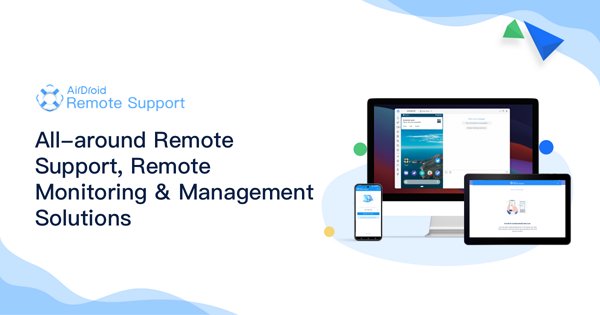
Features:
- End-to-end encryption: AirDroid Remote Support uses AES-256 encryption to ensure the security and privacy of the data transmitted between the devices.
- Screen sharing: It allows healthcare professionals to view the screen of the hospital device remotely and see the patient data in real time.
- Voice call: It enables healthcare professionals to communicate with the patients and staff via voice call and provide instructions and feedback.
- AR camera: It allows healthcare professionals to remotely access the camera of the hospital device and capture images and videos of the patient's condition and environment.
- File transfer: This software enables healthcare professionals to send and receive files, such as medical records, prescriptions, and test results, remotely to and from the hospital device.
Difficult to Integrate with Multiple Devices and Protocols
A third challenge of IoT in healthcare is integrating with multiple devices and networks from different manufacturers and providers, which may have different standards, protocols, and formats for data collection, transmission, and processing. These differences may cause compatibility and interoperability issues and may affect the quality and reliability of the data and the services.
Therefore, it requires a common and unified platform and framework for integrating and managing various IoT devices and networks and ensuring the data and services' consistency and accuracy.
Data Overload
A fourth challenge of IoT in healthcare is the data overload and congestion caused by the large amounts of data generated and processed by the IoT devices and networks, which may exceed the capacity and capability of the existing systems and infrastructures. Data overload may affect the performance and efficiency of IoT devices and networks and cause delays, errors, or losses in the data and the services.
Thus, IoT in healthcare requires advanced and scalable systems and infrastructures for storing, processing, and analyzing data and providing timely and relevant data and services.
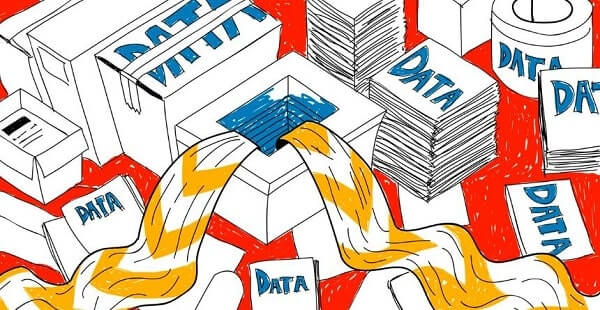
Need for Strict Regulation
IoT in healthcare involves using sensitive and personal health-related data, which may have legal and ethical implications and require strict regulation and compliance. It may pose potential risks and challenges to the security and quality of healthcare services and may require strict regulation and evaluation.
So, it requires clear and comprehensive policies and guidelines for governing and regulating the use and development of IoT devices and networks and ensuring patients and healthcare organizations' protection and accountability.
Part 5: Future Outlook for the Integration of IoT and Healthcare
The Internet of Things for healthcare is a rapidly evolving and expanding field with great potential and opportunities for improving and transforming the healthcare industry and society. Some of the possible future trends and developments of IoT in healthcare are:
Personalized Healthcare
IoT in healthcare can enable personalized healthcare, which is the provision of healthcare services tailored and customized to the individual needs and preferences of the patients based on the data and insights from the IoT devices and networks. Personalized healthcare can improve the effectiveness and efficiency of healthcare services and can also enhance patient satisfaction and outcomes.
Wearable Health Technology
Wearable health technology uses wearable devices and sensors that can monitor and record patients' health and fitness metrics and provide feedback and coaching for health and wellness. Wearable health technology can empower patients to take more control and responsibility for their health and wellness and improve healthcare services' access and convenience.

Predictive Remote Patient Monitoring
IoT in healthcare can enable predictive remote patient monitoring, which is the use of IoT devices and networks that can monitor and record various health-related parameters and conditions of the patients at home or outside the hospital and that can use AI and machine learning (ML) to analyze and predict the risk of hospitalization, complications, or adverse events, and that can provide alerts and interventions for prevention and treatment. Predictive remote patient monitoring can improve healthcare services' safety and quality.
Telemedicine Extension
Telemedicine extension is the use of IoT devices and networks that can connect and communicate with patients and healthcare providers remotely, providing remote and real-time monitoring, diagnosis, and treatment of the patients, providing information and guidance for health and wellness. Telemedicine extension can improve healthcare services' access and convenience and enhance healthcare providers' collaboration and communication.
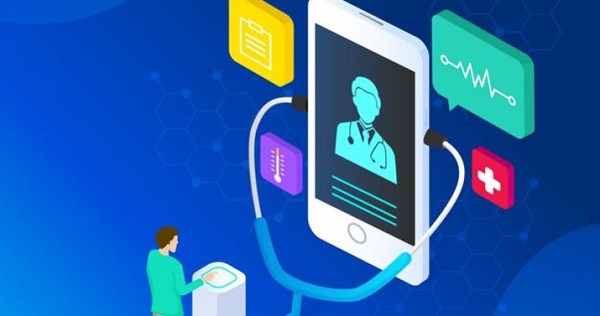
Blockchain Technology
IoT in healthcare can enable blockchain technology, which is a spread and decentralized ledger that can store and verify the data and the transactions from the IoT devices and networks, and that can provide security, transparency, and trust for the data and the services. Blockchain technology can improve patient and healthcare organizations' data security and privacy protection.
Artificial Intelligence Integration
Artificial intelligence integration is artificial intelligence and machine learning that can process and analyze the data and insights from the IoT devices and networks, provide decision support and care coordination for the healthcare providers, and provide feedback and coaching for the patients. Artificial intelligence integration can improve the performance and the quality of healthcare services.
5G Connectivity
5G connectivity is the fifth generation of wireless communication technology that can provide faster, more reliable, and more efficient data transmission and reception for IoT devices and networks and can support more devices and applications for healthcare services. 5G connectivity can improve the data quality and reliability of IoT devices and networks and enable more advanced and complex IoT applications and services for the healthcare industry.
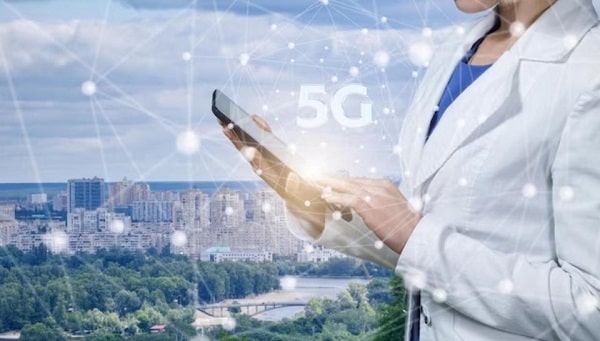
Conclusion
Bringing the Internet of Things (IoT) into healthcare helps make healthcare better. It means using smart devices that talk to each other to improve how we care for patients. These devices can monitor our health, remind us to take medicine, and even help doctors with surgeries. But there are some challenges, too, like it can cost a lot of money, and we need to keep our health data safe.
In the future, we can expect more personalized healthcare, cool gadgets we can wear, and even better ways doctors can take care of us using innovative technology.
If you want a safe way for doctors to see your health data, you can try using AirDroid Remote Support, a unique software that keeps your information private and secure.






Leave a Reply.